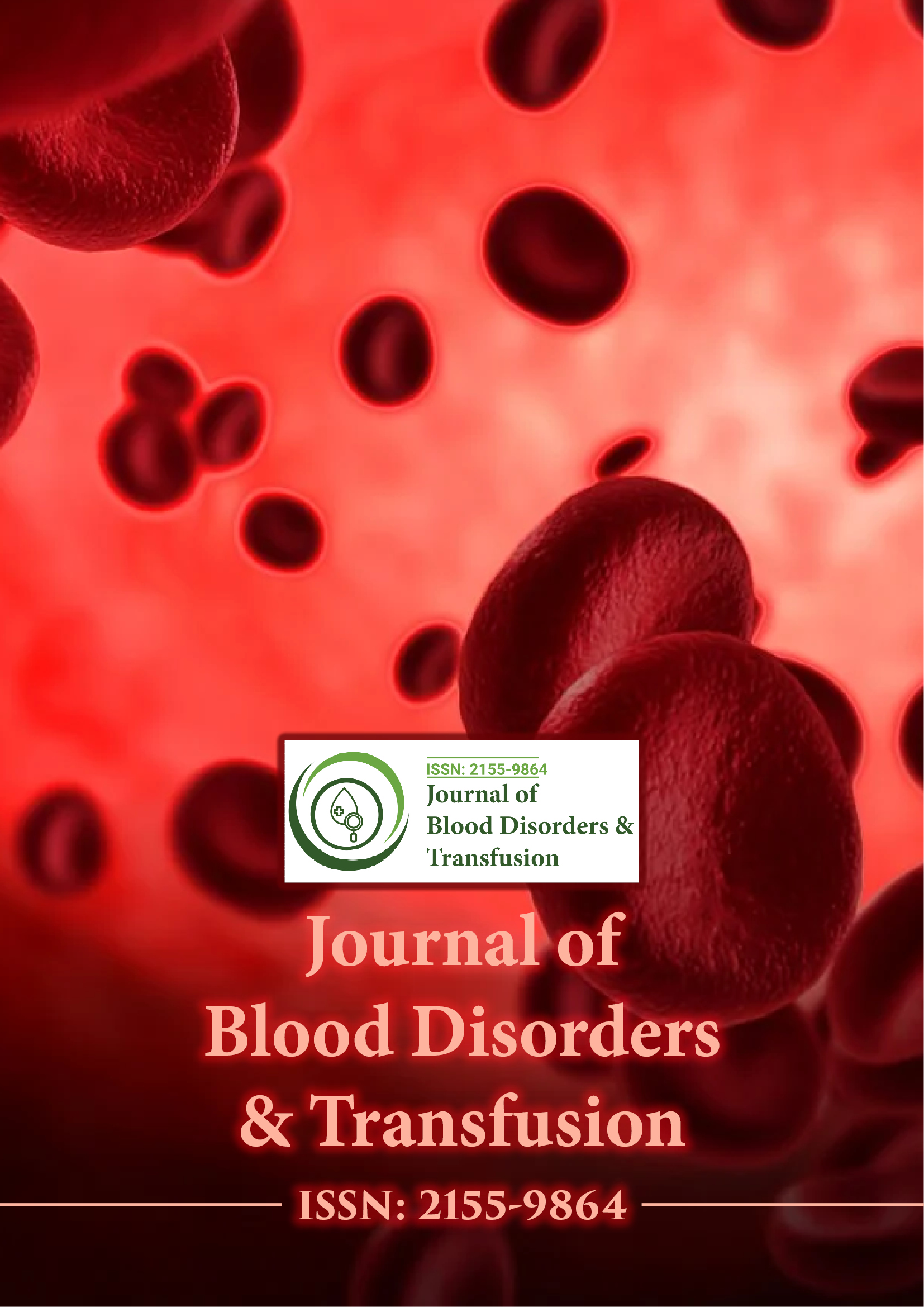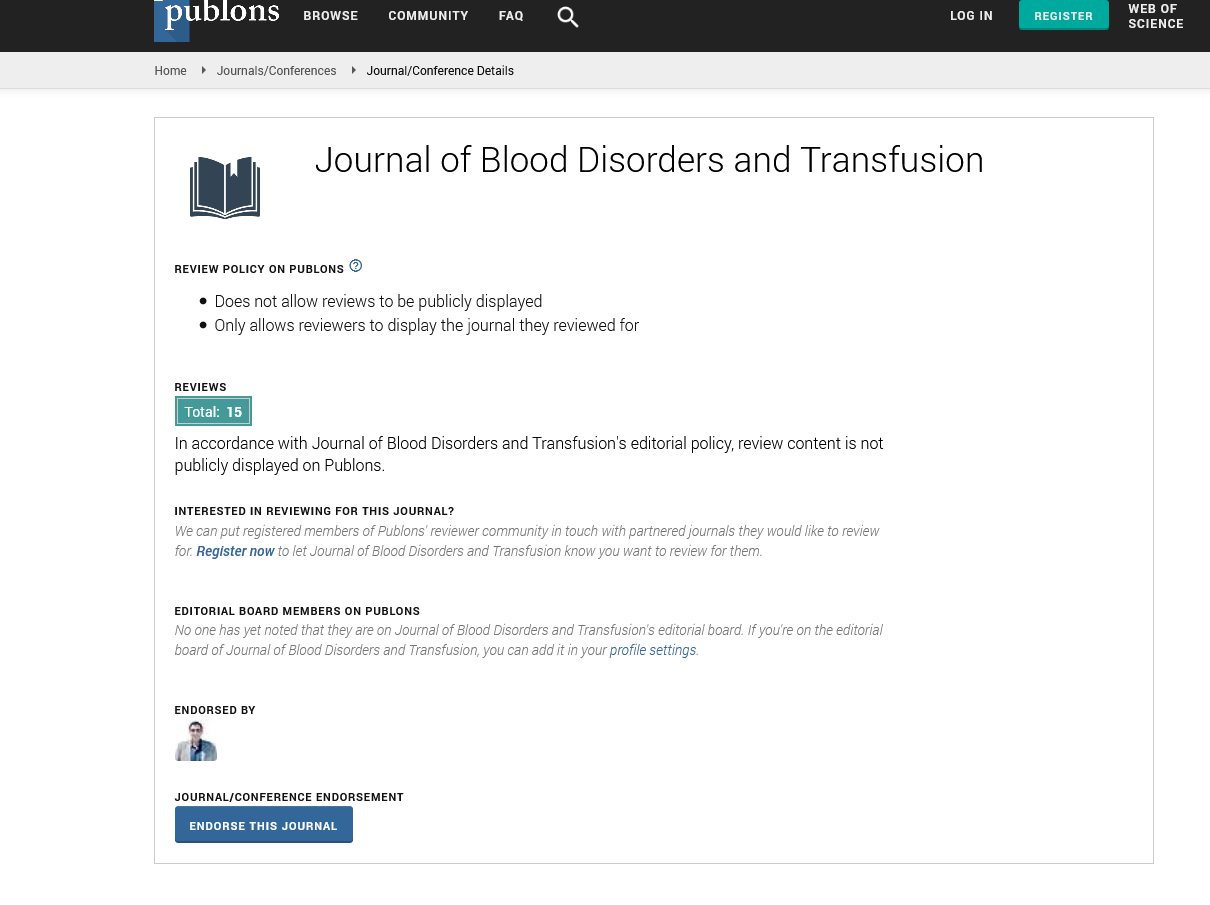Indexed In
- Open J Gate
- Genamics JournalSeek
- JournalTOCs
- Ulrich's Periodicals Directory
- RefSeek
- Hamdard University
- EBSCO A-Z
- OCLC- WorldCat
- Proquest Summons
- Publons
- Geneva Foundation for Medical Education and Research
- Euro Pub
- Google Scholar
Useful Links
Share This Page
Journal Flyer

Open Access Journals
- Agri and Aquaculture
- Biochemistry
- Bioinformatics & Systems Biology
- Business & Management
- Chemistry
- Clinical Sciences
- Engineering
- Food & Nutrition
- General Science
- Genetics & Molecular Biology
- Immunology & Microbiology
- Medical Sciences
- Neuroscience & Psychology
- Nursing & Health Care
- Pharmaceutical Sciences
Commentary - (2025) Volume 16, Issue 2
Contact System Disruptions During ECMO in Children
Fumiya Otaka*Received: 25-Feb-2025, Manuscript No. JBDT-25-28783; Editor assigned: 27-Feb-2025, Pre QC No. JBDT-25-28783 (PQ); Reviewed: 13-May-2025, QC No. JBDT-25-28783; Revised: 20-May-2025, Manuscript No. JBDT-25-28783 (R); Published: 27-May-2025, DOI: 10.4172/2155-9864.25.16.614
Description
Extracorporeal Membrane Oxygenation (ECMO) is a lifesupport modality employed in pediatric patients with severe cardiac or respiratory failure. While it provides critical physiological support, ECMO introduces complex challenges related to hemostasis. The activation of coagulation pathways, particularly those involving the contact system, contributes significantly to thrombotic and bleeding complications observed in children receiving ECMO. Within this system, factors XI (FXI) and XII (FXII) have received increased attention for their distinct roles in contact activation and propagation of thrombin generation.
Hemostasis and the contact pathway
In the pediatric ECMO setting, the artificial surface of the circuit induces systemic inflammation and activates coagulation pathways. The contact system, composed of FXII, FXI, prekallikrein and high-molecular-weight kininogen, becomes a key interface between biomaterial exposure and coagulation. FXII undergoes auto activation upon binding to nonphysiological surfaces, initiating a cascade that leads to kallikrein generation and activation of FXI. This process can contribute to thrombin generation independent of tissue factor, particularly in extracorporeal conditions.
Pediatric coagulation
Children, especially neonates and infants, differ from adults in their baseline coagulation profiles. Plasma levels of many coagulation factors, including FXI and FXII, are lower at birth and gradually reach adult levels over time. These physiological differences necessitate age-appropriate interpretation of laboratory values and coagulation trends during ECMO.
The hemostatic system in children is characterized by reduced thrombin generation potential, but this does not necessarily correlate with an increased bleeding risk. Instead, children may exhibit a relatively balanced hemostatic state under normal conditions. However, the introduction of an ECMO circuit disrupts this equilibrium. The continuous exposure of blood to synthetic surfaces, coupled with underlying illness and inflammatory states, alters the activity of FXI and FXII over time.
Longitudinal trends in FXI and FXII
Monitoring changes in FXI and FXII levels throughout ECMO support reveals important temporal patterns. Initial exposure to the circuit typically results in rapid consumption or activation of FXII, often leading to reduced measurable levels in plasma. This depletion may coincide with heightened kallikrein activity and generation of bradykinin, contributing to inflammation and vascular permeability.
Over the first 24 to 72 hours, FXII activity may remain suppressed, depending on the severity of activation and the degree of systemic inflammation. FXI levels may demonstrate a more variable course. Some patients exhibit decreased FXI activity, possibly due to consumption in ongoing coagulation processes, while others maintain near-baseline levels, reflecting individual variability in coagulation response and anticoagulation strategy.
Potential strategies for factor modulation
Emerging interest in selectively modulating FXI and FXII has led to investigations of novel anticoagulants that target these factors. Inhibiting FXII may reduce thrombotic complications associated with contact activation without significantly increasing bleeding risk. Similarly, FXI-directed therapies aim to limit thrombin amplification, offering a potential alternative to traditional heparin therapy.
While these approaches remain experimental in pediatric ECMO, they underscore the importance of understanding the temporal dynamics of FXI and FXII in this population. Any attempt to implement such therapies would require careful consideration of developmental hemostasis and individualized monitoring protocols.
Laboratory monitoring and research gaps
Accurate assessment of FXI and FXII levels is essential for interpreting their role during ECMO. Standard laboratory assays may not provide real-time or functionally relevant information. Chromogenic assays, clotting time tests and global coagulation assays like Thromboelastography (TEG) or Rotational Thromboelastometry (ROTEM) may offer complementary data, but their correlation with clinical events remains inconsistent.
Longitudinal studies in children on ECMO are limited, particularly those focusing on specific coagulation factors. Current data suggest that both FXI and FXII play dynamic roles throughout ECMO support, but larger, multicenter efforts are needed to clarify their prognostic value and potential as therapeutic targets.
Citation: Otaka F (2025). Contact System Disruptions During ECMO in Children. J Blood Disord Transfus. 16:614.
Copyright: © 2025 Otaka F. This is an open-access article distributed under the terms of the Creative Commons Attribution License, which permits unrestricted use, distribution, and reproduction in any medium, provided the original author and source are credited.

